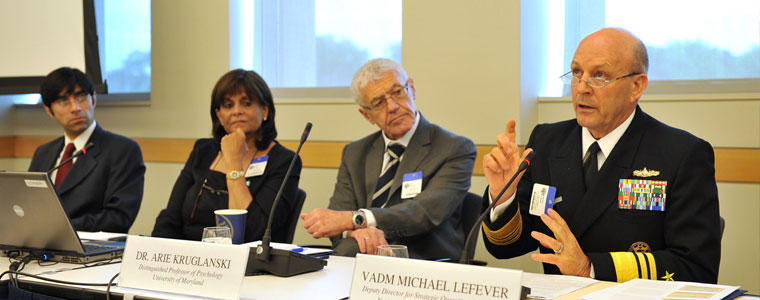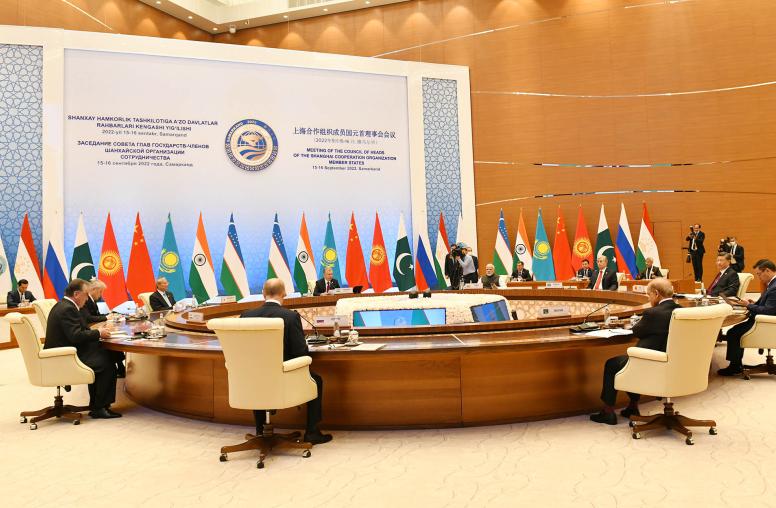The Challenges of Countering Radicalization in Pakistan
The U.S. Institute of Peace (USIP) on May 9 convened experts to examine a key issue in strategically vital Pakistan: countering radicalization and violent extremism.

The U.S. Institute of Peace (USIP) on May 9 convened experts to examine a key issue in strategically vital Pakistan: countering radicalization and violent extremism.
Counter-radicalization and de-radicalization efforts are receiving more attention by the United States and the international community as part of a broader, long-term approach to respond to the problem of those who have already drifted into the ranks of extremists. In March 2012 alone, Pakistan experienced 113 reported terrorist or insurgent attacks, resulting in 136 deaths and 185 injuries. The growing radicalization of Pakistani youth is a worrisome potential indicator of challenges to come. The Institute is active inside of Pakistan in efforts to promote religious tolerance and peaceful interfaith dialogue and to counter extremist messaging.
The May 9 USIP meeting cast a spotlight on a major effort in Pakistan’s Swat Valley, the scene of violent attacks by Taliban groups against Pakistan’s Army and civilians, to de-radicalize teenage boys once pulled into the Taliban through a multifaceted education program at the Sabaoon School. Sabaoon means the “first ray of light at dawn.”
Vice Admiral Michael LeFever, the deputy director for Strategic Operational Planning at the U.S. National Counterterrorism Center, called the efforts at the Sabaoon School “incredible work,” adding, “It’s work that needs to continue at a much greater pace.” LeFever has years of experience in Pakistan, including leading U.S. military efforts to provide humanitarian assistance to Pakistanis after a major earthquake and flooding. He described the broader significance of the de-radicalization work from a U.S. perspective. “Pakistan is of huge strategic significance,” he said, and U.S. policy includes support for efforts “helping people reject the path of violence.”
Feriha Peracha, the director and supervising psychologist of the Sabaoon School, described the Pakistan Army-initiated work as an effort to rehabilitate and reintegrate Swat Valley youths who fell under the sway of Pakistani Taliban. The school, which took in its first students in August 2007, has educated more than 200 Pakistani teens, 143 of whom so far have been reintegrated into Pakistani society and are attending college or have jobs. Their progress continues to be monitored. At the school, the boys receive “psychosocial intervention,” secondary school education, corrective religious instruction and room and board, she said. “I think most will not revert to militancy,” Peracha said. “The changes have been phenomenal.”
Peracha identified poverty, deprivation and political pressures as key factors in the youths’ vulnerability to becoming part of violent extremist groups. “I think religion is not the primary motive,” she said. “It is not about Islam.”
She told the USIP gathering that she hopes to expand her efforts with interventions for children in primary schools and with programs to involve the mothers of at-risk children in literacy and health education. She estimated that some 15,000-20,000 Pakistani children in the Swat Valley are at risk of falling into violent extremism.
Arie Kruglanski, a social psychologist at the University of Maryland, described the individual and social pressures in the backgrounds of those perpetrating violent extremism. He said research indicates that the core dynamic is one of people who lose their sense of significance and then engage in a quest to restore it: “the desire to matter, to count, to be somebody, to be recognized.” Kruglanski said that research has developed a “fairly good theoretical understanding” of the radicalization process. But less well understood are how that process translates into specific actions and, in turn, how governments can create effective policies to counter violent extremism.
USIP itself has taken on several roles in this field with three types of activity. The USIP Pakistan Priority Grant Competition supports civil society organizations in promoting interfaith dialogue against religious extremism, in advancing public education on Pakistan’s diversity and in improving media coverage of related issues.
The Grant Program recently awarded funds to Equal Access International (EAI) for a project titled Step By Step (Kadam Pa Kadam). EAI will implement a six-month media project in the troubled border regions of the Federally Administered Tribal Areas (FATA) and the Khyber Pakhtunkhwa province to empower women who have been marginalized by the political process and to foster dialogue among youth who are at risk of being absorbed into the ongoing insurgency.
In the media sector, USIP’s work to counter extremist voices includes a partnership with a local Pakistani organization to conduct baseline content analysis and produce a “map” of Pakistani vernacular media outlets that will depict the extent to which they regularly broadcast or publish extremist or counter-extremist messages. The map will also identify the reach and impact of organizations, as well as their key owners, editors and others who manage and back them. Additionally, USIP will convene a series of closed- door dialogues—in collaboration with local Pakistani partners—where these influential media actors can come together to discuss both the findings of the content analysis and measures that have proven successful elsewhere in reducing extremist voices in the media.
Further, USIP is using its ongoing partnerships with local think tanks and universities to conduct fieldwork, commission research papers and support initiatives that strengthen the capacity of Pakistani institutions to conduct rigorous research and analysis on extremism and counter-extremism. The Institute is supporting a research project titled The Challenges of Stabilizing Karachi. It will outline the causes of violence in the country’s commercial center, Karachi. The project aims to increase awareness among U.S. policymakers about a major security issue in Pakistan that is often overlooked by international media. By explaining the reasons for violence in Karachi, the project aims to highlight the hyper-local, ethnic, political and criminal factors that spawn unrest there. The effort should produce a more nuanced understanding of Pakistan’s security challenges.
Explore Further
- Learn more about efforts to combat violent extremism in Pakistan
- Read the new Peace Brief Fixing Pakistan’s Civil-Military Imbalance: A Dangerous Temptation



